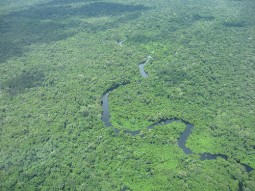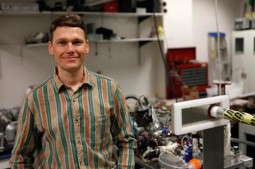
The Yasuni National Park in Ecuador is one of the most biodiverse places on earth, but it is currently at risk from oil development. Some of the park’s inhabitants, however, are trying to forge a more sustainable, and less destructive path out of poverty. These indigenous Kichwa people, who have already been caretakers of the rainforest for hundreds of years, have developed ecotourism in the region, providing all the jobs, schools and healthcare that they need. How did the community find the commitment and tenacity required for such a project? By thinking like Leafcutter ants.
To find out about the award winning model of conservation and sustainability H20 Radio’s Frani Halperin and Jamie Sudler visited the region earlier this year and produced the podcast Want to save the Amazon? Think like an Ant. We play this feature [4:15] on this week’s show and afterward [18:30] talk with Frani and Jamie about the project and what Coloradoan’s can learn from the Kichwa community’s efforts.
Hosts: Jane Palmer, Beth Bennett
Producer: Jane Palmer
Engineer: Maeve Conran
Executive Producers: Kendra Krueger, Jane Palmer
Listen to the show:
Podcast: Play in new window | Download (Duration: 24:38 — 22.6MB)
Subscribe: RSS





 Amazon CO2 (start time 04:37) The Amazon basin contains the largest tropical rainforest on the planet. It’s been critical not only for its beauty and biodiversity but also for its ability to store more carbon dioxide than it emits. The soil and above-ground biomass of the Amazon makes it one of the largest reservoirs of carbon dioxide. And that has helped to keep climate change from accelerating even faster. But a new
Amazon CO2 (start time 04:37) The Amazon basin contains the largest tropical rainforest on the planet. It’s been critical not only for its beauty and biodiversity but also for its ability to store more carbon dioxide than it emits. The soil and above-ground biomass of the Amazon makes it one of the largest reservoirs of carbon dioxide. And that has helped to keep climate change from accelerating even faster. But a new  Power Plant Smokestacks (start time 14:43) To understand the global greenhouse gas budgets, it’s critical to characterize their sources and sinks. Electrical power generation accounts for about a
Power Plant Smokestacks (start time 14:43) To understand the global greenhouse gas budgets, it’s critical to characterize their sources and sinks. Electrical power generation accounts for about a